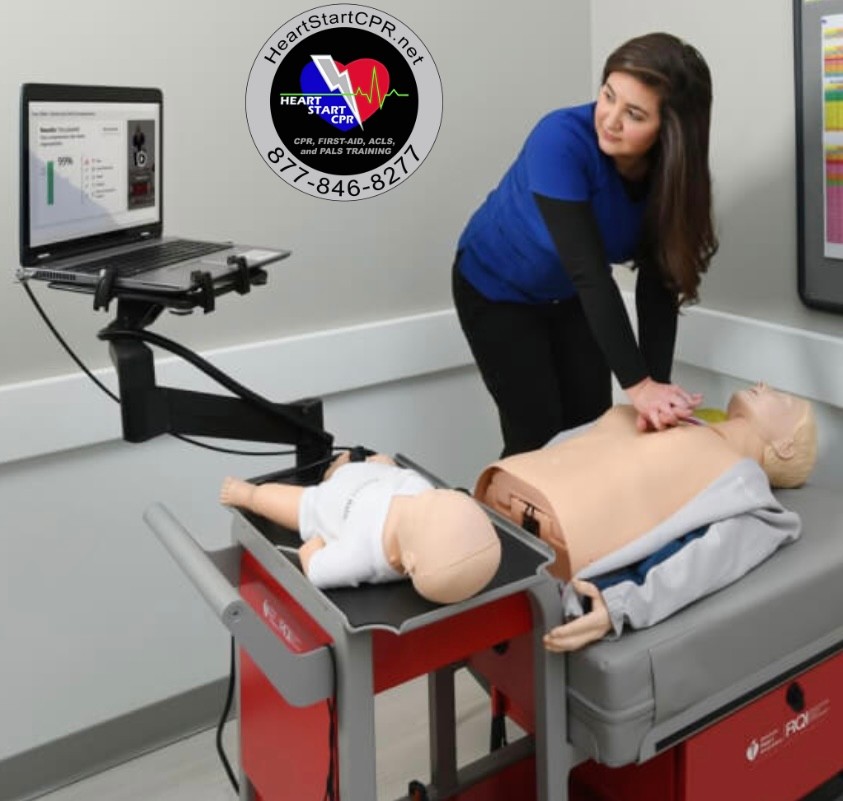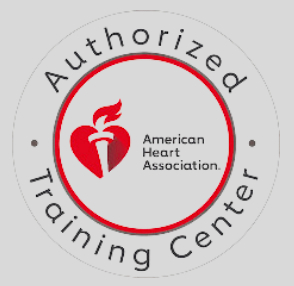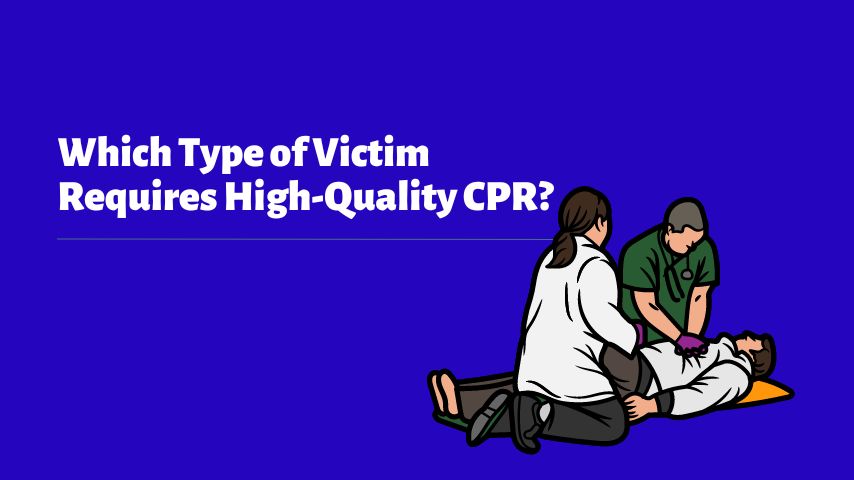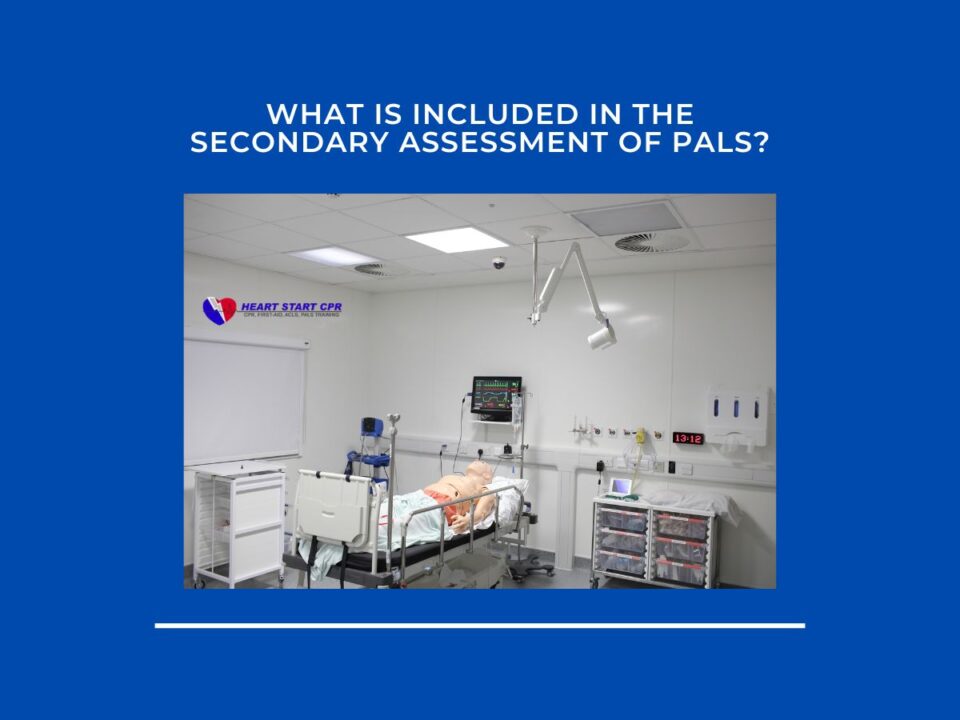
How Long Does CPR Certification Last?
May 10, 2024
Can Heart Failure Be Reversed?
May 15, 2024High-quality CPR means performing cardiopulmonary resuscitation in a manner that maximizes the victim’s chances of survival and positive outcomes. It ensures that blood and oxygen reach vital organs, which is crucial during cardiac arrest. Recognizing the importance of delivering timely and efficient CPR can make a life-saving difference in emergencies.
How Do You Measure a High-Quality CPR?
Measuring high-quality CPR involves evaluating several key factors like, the rate of chest compressions and depth of compressions. If you are providing 100 to 120 compressions per minute with a 2-inch depth of compressions for adults, then it’s high-quality CPR. However, this compression depth is for adults and not children or infants. Also, it’s important to let the chest fully recoil after each compression to allow the heart to refill with blood. Plus, you need to keep interruptions to chest compressions under 10 seconds whenever possible. And ensure proper ventilation by giving breaths at a rate of one breath every 6 seconds without an advanced airway. If you follow these measures, you are performing high-quality CPR.
What Does High-Quality CPR Do?
High-quality CPR plays a pivotal role in cardiac arrest resuscitation by effectively maintaining blood circulation and oxygen delivery to vital organs, particularly the brain and heart. Achieving a high chest compression fraction through precise chest compressions is crucial for maintaining continuous blood flow, preventing organ damage, and sustaining cellular function.
Also, proper ventilation techniques during CPR help deliver essential oxygen to the lungs. This helps to facilitate the oxygenation of the blood. The combination of chest compressions and rescue breaths increases the chances of restoring a normal heart rhythm. Ultimately, high-quality CPR significantly improves survival rates from cardiac arrest and enhances the likelihood of favorable neurological outcomes for survivors by minimizing brain damage.
Identifying Which Type of Victims Require High-Quality CPR
To be fair, everyone who needs CPR requires high-quality CPR. There shouldn’t be a thing like low-quality CPR because you are risking somebody’s life if you are not using the right CPR techniques. Delivering high-quality CPR means you are performing all the processes correctly. It greatly increases the victim’s chances of survival from a life-threatening emergency.
However, some victims are at higher risk and have a superior need for rapid, effective CPR. Let’s look at who these higher-risk CPR victims are and why delivering timely CPR techniques is so crucial for giving them the best chance at life.
1. Cardiac Arrest Victims
Cardiac arrest victims are individuals whose hearts suddenly stop beating. These victims require immediate CPR to keep blood flowing and oxygen circulating throughout their bodies. Without immediate intervention, cardiac arrest victims face the risk of irreversible brain damage or death. Therefore, delivering high-quality CPR promptly is critical in providing them with the best chance of survival and positive outcomes. Every second counts in giving them a fighting chance.
2. Drowning Victims
Drowning victims are another group that requires high-quality CPR for their survival. When someone is drowning, their lungs may fill with water, causing them to stop breathing and their heart to stop beating. In these situations, CPR is crucial for removing water from the lungs, bringing back breathing, and restarting the heart. Quick, quality CPR on drowning victims rapidly restores oxygen to their system and potentially saves their lives.
3. Choking Victims
Choking victims also require high-quality CPR. When an object is stuck in a person’s throat, it obstructs the airway. This can cause a sudden inability to breathe. In such situations, prompt and effective CPR is needed to remove the obstruction and restore the victim’s ability to breathe. Without immediate intervention, choking victims face the risk of severe oxygen deprivation and even death. Therefore, ensuring high-quality CPR is crucial in providing the best chance of survival and recovery for choking victims.
Must Read: What Should You Do Before Giving Breaths to an Unresponsive Choking Person
4. Drug Overdose Victims
According to updated guidelines by the American Heart Association for overdose death, it’s crucial to perform CPR for overdose victims when they are unresponsive and not breathing normally. Overdosing on drugs, especially opioids, can slow down or stop a person’s breathing. CPR can help keep their oxygen levels up until medical help arrives.
5. Trauma Victims
Trauma victims require high-quality CPR to address their life-threatening condition. When individuals sustain severe injuries from accidents or falls, their heart function may cease, leading to cardiac arrest. In such critical situations, immediate and effective CPR is crucial for maintaining blood circulation until emergency services can deliver advanced medical care. Without timely intervention, trauma victims face increased risks of irreversible damage or death.
6. Respiratory Arrest Victims
Some conditions, like severe asthma attacks or allergic reactions, can cause a person’s breathing to fail. When this happens, CPR is the immediate treatment for respiratory arrest victims. It ensures oxygenation of the body’s vital organs, including the brain and heart. By promptly initiating CPR, responders can help sustain the victim’s oxygen levels until they can receive appropriate medical interventions to address the underlying cause of respiratory failure.
7. Electrocution Victims
Electrocution victims who suffer from disruptions to the heart’s rhythm due to electrical shocks require high-quality CPR. When electrical shocks lead to cardiac arrest, initiating CPR promptly is crucial in maintaining blood circulation and oxygenation to vital organs. According to the CDC, while immediate defibrillation would be ideal, CPR given within approximately 4 minutes of the electrocution, followed by advanced cardiac life support (ACLS) measures within approximately 8 minutes, can be lifesaving. CPR can improve their chances of survival until they receive medical assistance.
8. Hypothermia Victims
When individuals are exposed to extremely cold temperatures, it can slow down their heart rate to a dangerous level, leading to hypothermia. CPR can be highly beneficial for hypothermia victims until they receive proper medical treatment. Without timely intervention, hypothermia victims face severe risks, including organ failure, cardiac arrest, and, ultimately, death.
Benefits of High-Quality CPR
High-quality CPR provides several important benefits during cardiac arrest resuscitation:
- It helps to maintain blood flow to vital organs, such as the brain and heart, to prevent significant damage.
- High-quality CPR delivers essential oxygen to the lungs, ensuring proper oxygenation of the blood and supporting cellular function.
- It improves the chances of successful defibrillation by creating a favorable electrical environment in the heart.
- High-quality CPR significantly increases survival rates from cardiac arrest when performed promptly and effectively.
- It also enhances the likelihood of better neurological outcomes by minimizing brain damage through adequate blood flow and oxygenation.
- Serves as a crucial bridge to advanced medical care, maintaining circulation until professional help arrives.
Take Action: Learn High-Quality CPR with Heart Start CPR
If you want to be prepared for cardiac emergencies and save the lives of those facing cardiac arrest, choking, drug overdose, stroke, electrocution, and other emergencies, then learn CPR. High-quality CPR can make the difference between life and death for those victims. Sign up for HeartStart CPR training today and be ready to make a life-saving difference when it matters most. We offer both classroom and online courses. Choose the one that fits your comfort and learn from the expert instructors. Enroll, earn your certification, and take the first step towards making a difference in emergency situations.






